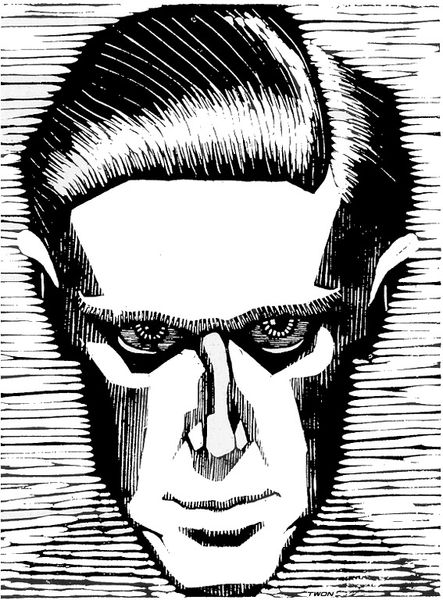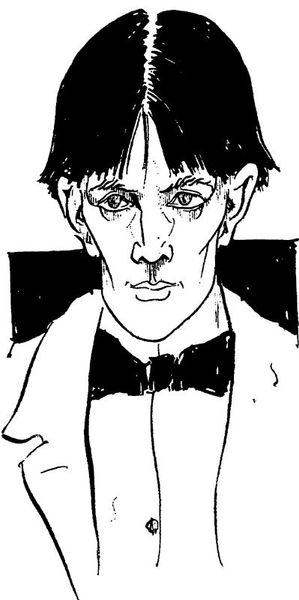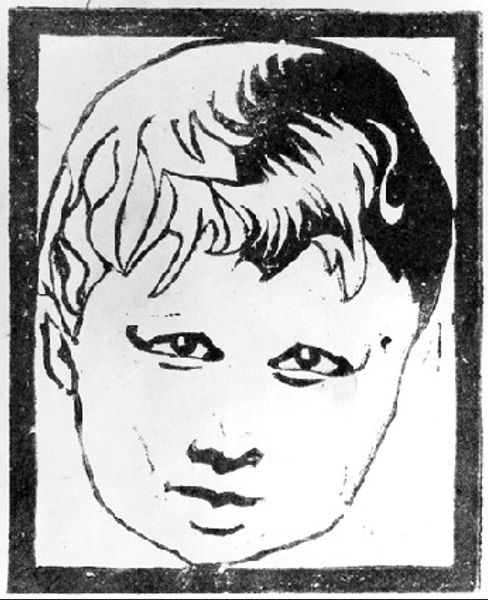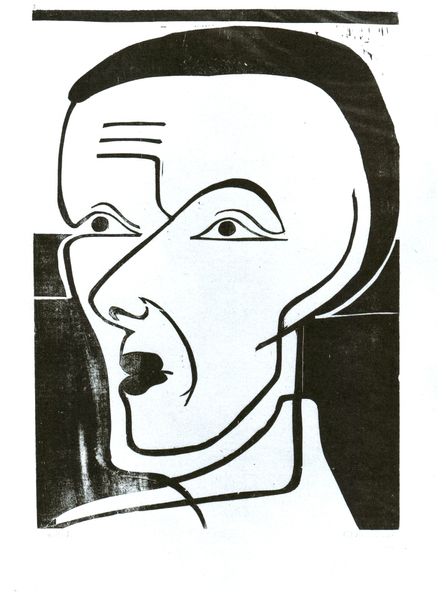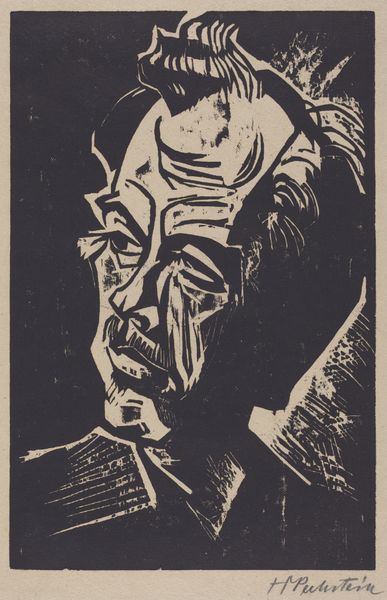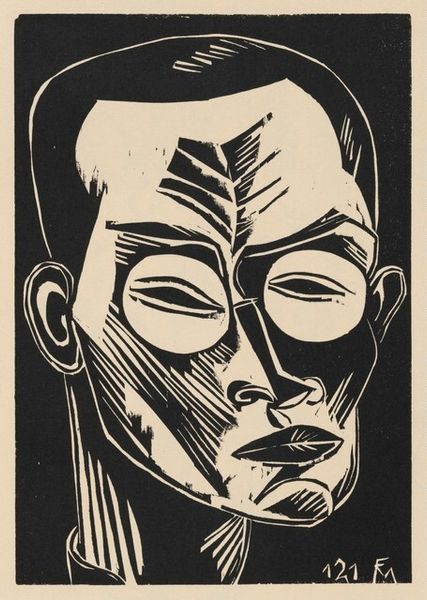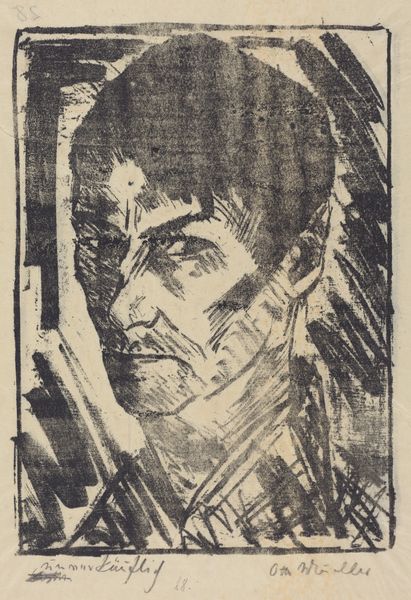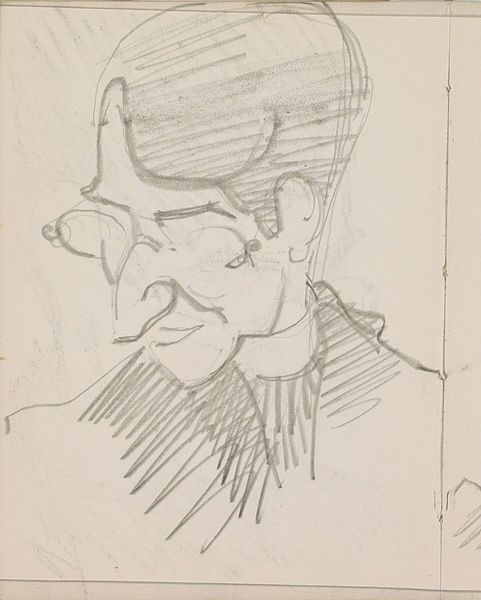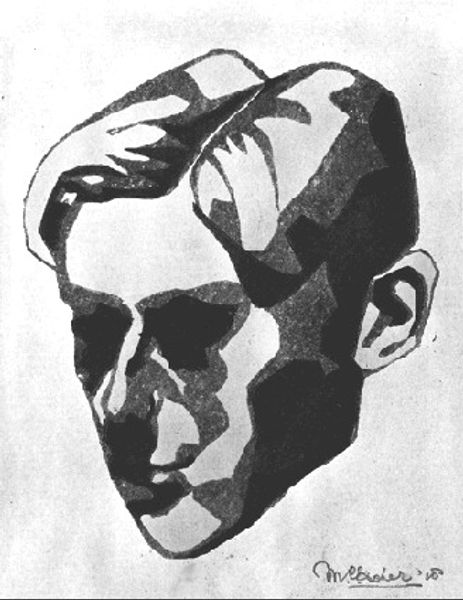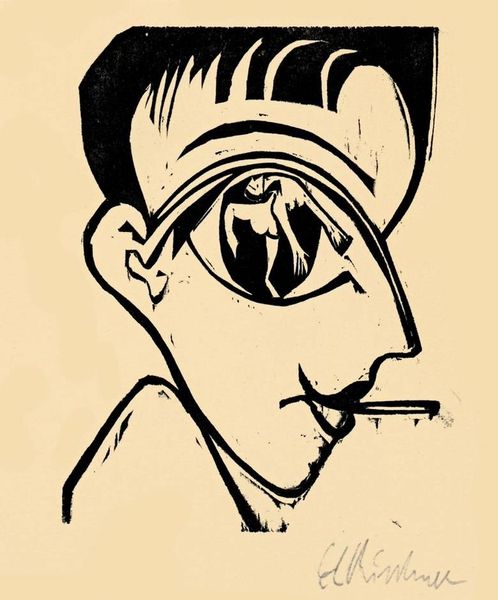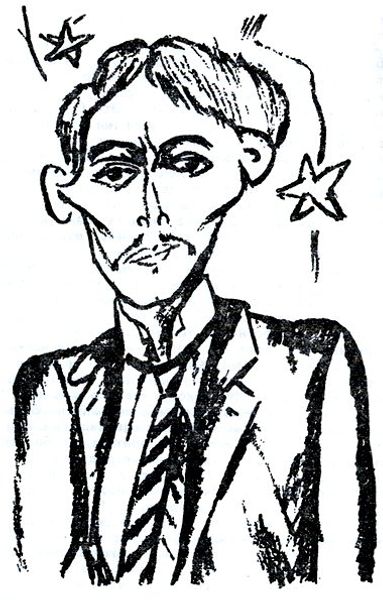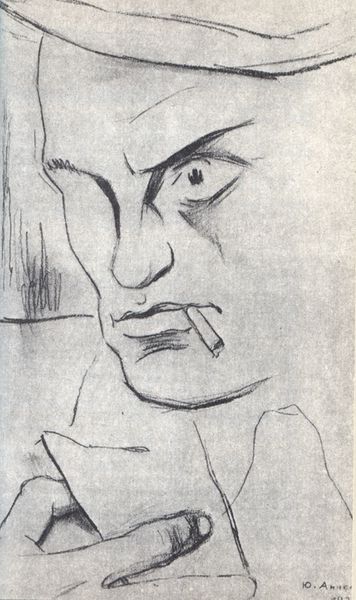
print, woodcut
#
portrait
# print
#
expressionism
#
woodcut
#
line
#
monochrome
Copyright: Public domain US
Curator: Today we're looking at "Portrait of a Man," a woodcut created in 1917 by M.C. Escher, known for his later explorations of mathematical concepts in art. Editor: My first thought? He looks like he’s plotting something! The high contrast and severe angles give off a feeling of intense focus, maybe even a bit of cunning. Or maybe he’s just tired! Curator: Considering it was created in 1917, amidst the turbulence of World War I, we might interpret that intensity as reflecting the anxieties of the time. Escher, though Dutch, lived in a Europe consumed by conflict. Expressionism, which this artwork echoes in its raw emotion and stark contrast, often grappled with societal unease. Editor: Absolutely. I mean, those thick, unwavering lines carving out his features—they're not just descriptive, they're emotionally charged! The closed eyes could be weariness or maybe a turning inward. Did Escher do many portraits like this? It's such a different mood from his later mind-bending tessellations. Curator: Early on, Escher experimented with portraits and landscapes, honing his technique. While this portrait stands apart from his better-known works, it shows his masterful handling of the woodcut medium, creating depth and volume using only black and white. Consider the lines shaping the hair; they possess a nearly calligraphic quality, almost a language in themselves. The woodcut printing process allowed him to create numerous copies. Editor: It's striking how such limited means – just the wood and the blade – could conjure up so much psychology! I keep coming back to those heavy eyelids. Is he dreaming? Contemplating? Or just really, really fed up? It's like he’s got a whole inner world we're only getting a tiny glimpse of. It resonates, doesn't it? Even today. Curator: Precisely. Escher’s “Portrait of a Man” operates on multiple levels. It is not merely an aesthetic study. Its composition, technique and its historical period create the space to discuss the broader anxiety and inwardness that are always lurking around us. Editor: Yeah, I am really moved. It's amazing how art can speak across a century – and maybe it just says we are all trying to find meaning in times of uncertainty, looking inward for clues.
Comments
No comments
Be the first to comment and join the conversation on the ultimate creative platform.
